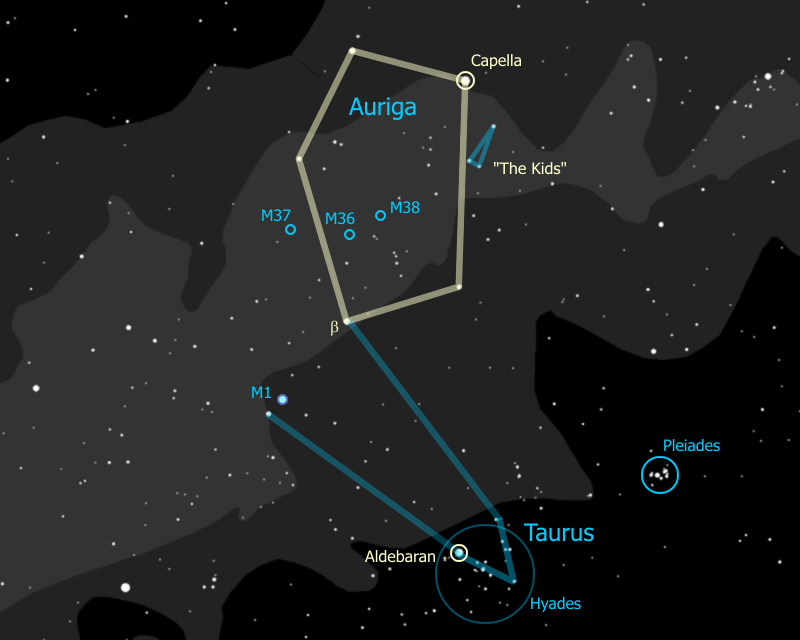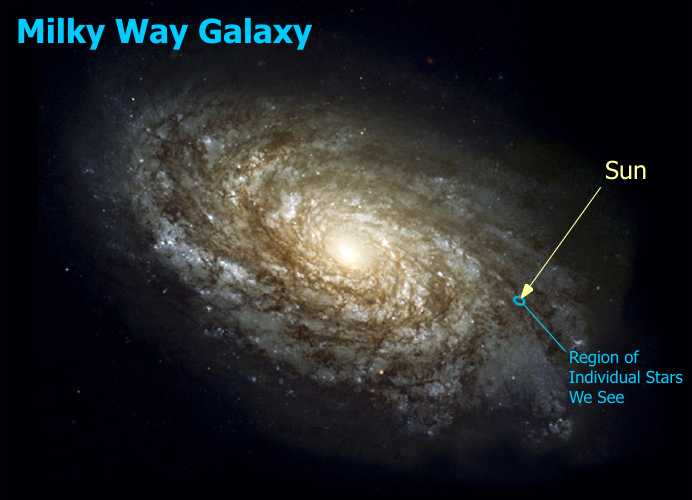
The Constellation Auriga


|
The Constellation Auriga |

|
We now will follow the two stars across the top of the cup of the
Dipper and cruise westward to the star Capella
in the constellation Auriga.

Auriga is often shown seated and holding a young goat in his arms, represented by the small thin triangle of stars along the right side of the pentangle. These stars are known as "The Kids". The star at the tip of this triangle is e (epsilon) Aurigae. This is one of the brightest stars in our galaxy, a huge star 2,000 light years away which, every 27 years, is eclipsed by something even huger -- eclipsed for two full years.
The mystery of how this happens may have been solved very recently -- in January of 2010 the theory was presented that e Aurigae is a dying star, with twice the mass of the sun and blown up to 100 times the diameter of the sun, whose outer shells are being blown off, captured, and formed into a disk by an orbiting companion star. It is this disk, which we are seeing edge on, that is periodically dimming e Aurigae.
| Artist's Conception of Epsilon Aurigae in Eclipse |
|
Auriga lies right across the Milky Way and therefore contains lots of interesting stars and star clusters. Someone want to tell me what that means -- "The Milky Way"? Where is the Milky Way (someone will always point it out). Most people recognize the Milky Way as a band of light across the night sky, but what is that band of light - where does it come from?
Well it's a bit like looking at a gravel road. Close to you, you can see individual stones, while off in the distance the road merges into a uniform gray. When you look at the Milky Way you are looking at the disk of our galaxy from the inside - the nearby stars you can see individually (most are less than 1,000 light years away), the distant stars merge into a hazy glow. So when you see that band across the sky you are really looking way off into the distance, into the "billions and billions" of stars that make up the disk of our galaxy.

You'll see a similar phenomenon when we look at the more distant galactic clusters. Through binoculars you see them as a hazy patch. When you see them through a telescope - that is, closer up - you can pick out individual stars. The better the telescope, the 'closer' you can get to the cluster, the more stars you can see.

 Back to the Polar Constellations
Back to the Polar Constellations
|
 Go to Spring Index
Go to Spring Index
|
 On to Gemini the Twins
On to Gemini the Twins
|
Your questions and comments regarding this page are welcome.
You can e-mail Randy Culp for inquiries,
suggestions, new ideas or just to chat.
Updated 11 November 2011